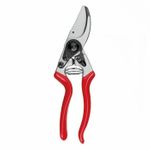
As a longtime practicing landscape consultant and arborist, I carefully follow developments regarding pesticide and agricultural products. We are all more concerned with the safety of chemicals these days, and the more we learn, the more cautious we become. Is Roundup, one of the most commonly used nonselective herbicides, something you want to use in your yard? Here are some facts to help you decide.
Know your ingredients
Roundup’s active ingredient, glyphosate, is reasonably safe if used according to directions. However, the Material Safety Data Sheet (MSDS) mentions microscopic cell changes and “developmental changes” in fetuses. Thus, it might be wise for anyone planning a family to avoid spraying with Roundup.

The other ingredients, which constitute 98 percent of Roundup, are unfortunately not as safe. One ingredient is a surfactant (a substance that helps products stick better on surfaces) labeled “hazardous” by the Occupational Safety and Health Administration (OSHA). It’s a detergent that can cause eye, skin, lung, and stomach problems, as would any concentrated cleaning detergent you use for the floor or dishwasher. So when using Roundup, wear gloves, don’t get it in your eyes, and don’t breathe the spray (I coughed for four weeks after indiscriminate spraying with Roundup).
Glyphosate binds quickly to soil particles, within two days to two weeks in most cases. Once in the soil, it doesn’t do much. It can persist for several weeks to six months before soil microbes and fungi eventually degrade it to phosphate and carbon dioxide.
Soil persistence depends on many factors, such as weather, soil type, hardiness zone, and previous chemical use on the land. It can be washed to another place before it binds, or it can unbind. And its by-products can be in the soil for some months. For occasional home users, this persistence shouldn’t really be a concern.
Roundup can run off into water, however, and is “moderately toxic” to some fish. When sprayed, it is “practically non-toxic”—a vague phrase from the MSDS—to birds, honeybees, and earthworms.
Proper use is crucial
In order to safely use any herbicide, it’s important to understand how it works. Roundup is absorbed only by actively growing tissue, not bark, so wait until the leaves come out. The best time to spray is on a calm, dry day between 60°F and 85°F, when the wind and rain won’t spread the herbicide where you don’t want it (onto other plants) and when leaves are most active.
Roundup is absorbed in one to two days and then translocated to the roots. It takes one to two weeks before the roots die and the leaves curl or turn brown. Some plants may need two treatments, especially those with shiny leaves, like poison ivy. If you are treating a woody plant, you can cut a stem and then soak the cut surface. Spray any foliage that resprouts.
I rarely use chemicals, but when I do, I label the containers they’re in because then they’re permanently contaminated. If chemicals are absolutely needed to cover a large area, it’s best to let the professionals apply them. And remember that pets, children, and your shoes all bring the chemicals into the house. Studies have shown that the concentration of garden chemicals in household rugs, especially near doors, is often higher than allowed outside by OSHA.
Since weed seeds sprout quickly, Roundup is only a short-term fix, best for spot treatments of noxious weeds or aggressive plants. The backyard gardener shouldn’t have serious concerns as long as Roundup is used in moderation and according to the label recommendations.
Rely on reputable sources
Good places to find information about Roundup are from poison-control centers, government agencies, universities, the manufacturer (www.roundup.com), and the MSDS.
On the Internet, there are some trusted scientific sources, mostly from universities and government agencies. However, much of the information one finds on the Web is not reliable. Most of the sources on Roundup refer to one or two old reports, copied from one Web site to another, rather than from reputable, easily available scientific journals.
Fine Gardening Recommended Products

Medium Nut Wizard 14" for English Walnuts, Chestnuts, Golf Balls
Fine Gardening receives a commission for items purchased through links on this site, including Amazon Associates and other affiliate advertising programs.

Felco Pruning Shears (F 9) - High Performance Swiss Made One-Hand Left-Handed Garden Pruners
Fine Gardening receives a commission for items purchased through links on this site, including Amazon Associates and other affiliate advertising programs.

















Comments
Roundup and Monsanto=WMD
Log in or create an account to post a comment.
Sign up Log in